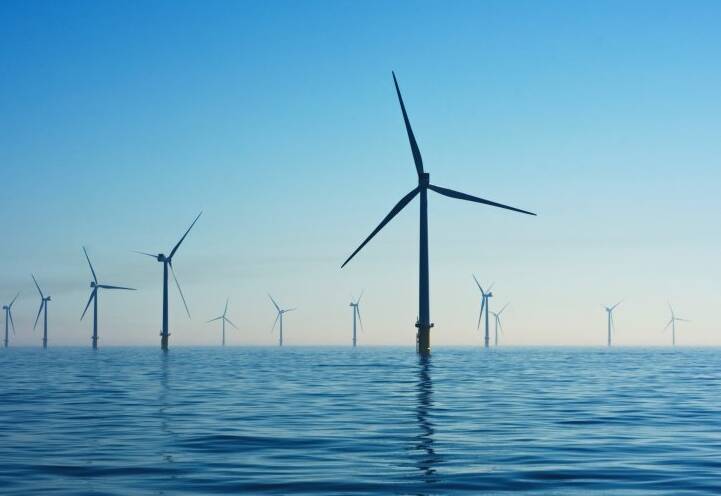
The Hunter's floating offshore wind farm zone has attracted eight licence applications, 29 fewer than a similar Victorian project involving turbines attached to the sea floor.
Hunter wind farm proponent Andy Evans, the chief executive of Oceanex, said the difference in licence interest was due to the types of technology proposed for the two projects.
"The main reason it's smaller is because it's floating foundation technology," he said.
The government-designated Hunter offshore wind zone is further out to sea and in deeper water than the Gippsland zone, which attracted 37 applications last year.
The Gippsland turbines will be fixed to the sea floor.
The federal government called for feasibility licence applications for the Hunter zone from August to November last year.
It has not announced how many applications it received, but the National Offshore Petroleum Titles Administrator website shows the government is processing 45 feasibility licence applications in total for both zones.
Mr Evans expects the government to announce two or three successful applicants for the Hunter in June or July.
The Oceanex proposal is for about 130 15-megawatt floating turbines about 20 kilometres offshore with a capacity of two gigawatts of electricity.
This is significantly larger than other floating wind farms operating in Scotland, Portugal, Norway and the US.
Norwegian firm Equinor, Oceanex's partner, operates the world's largest floating wind farm, which at 88 MW and 11 turbines is 22 times smaller than the proposed Hunter farm.
The Equinor farm powers oil and gas rigs off the west coast of Norway.
Floating wind turbines are tethered to the sea floor and are far less common than fixed offshore turbines.
Scotland has two floating wind farm project areas with a potential capacity of 24 gigawatts in the pipeline.
Meanwhile, Energy Minister Chris Bowen has defended his government's rejection of a crucial project needed for Victoria's offshore wind industry.
Environment Minister Tanya Plibersek's decision to veto a planned terminal and assembly plant for Hastings port has angered the Victorian government, which has set strong renewable energy targets for the state.
The move was made to protect internationally recognised local wetlands.
Mr Bowen said the Albanese government was committed to the "careful" development of an offshore wind industry in Australia.
He said the government had approved multiple renewable energy developments under Ms Plibersek.
"But we will insist on proper and rigorous assessment of each and every one," he said.
"And this is a balance that we will strike, we have struck, and will continue ... to work with states and the private sector to achieve this."
Mr Bowen said approvals would be assessed "carefully, methodically and in accordance with the law" and he would welcome a fresh application for the project.
He said officials had already met to consider how a fresh application would be dealt with.
Australia has a target of reducing emissions by 43 per cent below 2005 levels by 2030.
Mr Bowen said the Gippsland refusal was not "meaningful" to the nation's 2030 target as the government did not expect many offshore wind projects to be operating by then.
"Setting up a new industry from scratch takes time," he said.
In a joint statement, opposition environment spokesman Jonno Duniam and energy spokesman Ted O'Brien labelled senior state and federal Labor ministers as having "descended into political civil war".
"It also reveals the perilous position of state and federal Labor's renewable energy targets that are all but unachievable," they said.
The Victorian National Parks Association said the project risked the wetlands and the habitat of threatened bird species.
The hub would have supported state targets of at least two gigawatts of offshore wind capacity by 2032, enough to power 1.5 million homes, as coal-fired electricity generation is phased out.
- with AAP




!["[T]he First and Fifth Amendments Require ICE to Provide Information About the Whereabouts of a Detained Person"](https://images.inkl.com/s3/publisher/cover/212/reason-cover.png?w=600)


